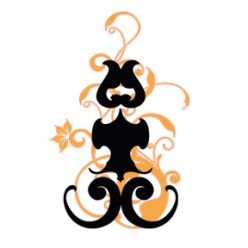The spa menu! Was there ever a thing so enticing, and simultaneously bewildering? ‘Bamboo Raindrop Swedish Scalp Treatment’! ‘Ayurvedic Aromatherapy Deep Tissue Scrub’! ‘Lavender Acupressure Intensive for Neck Pain’! ‘Meditative Earth Massage with Reflexology’? How in the world do you decide which one you need?
The dirty secret is, 90% of all this is marketing. Spas throw together these scrumptious-sounding confections so that they can charge you more money. That’s not to say the massage won’t be worth it; you just can’t tell by the packaging.
Your best bet is to shop around for a therapist who suits you. The technique is only as good as the therapist; anyone who is mechanically applying a particular treatment is not going to perform any miracles. And miracles are what you’re after!
With this in mind, here is your handy guide to deciphering the most common terms on spa menus.
Swedish Massage: This is basic. You take off your clothes, and the therapist rubs you with cream or oil in long, swooshing strokes. It’s nice. If the therapist is following the letter of the law, however, it won’t be much better than nice; if you’ve got a lot of knots, as most of us do, it can be screamingly frustrating. Your therapist will glide right over those festering areas, giving them no more and no less attention than the top of your hip bone. And few people ever get trigger points at their iliac crest.
Deep Tissue: Swedish, only tougher. Your therapist will go after those knots, possibly using elbows; your body will get a workout. However, the joy and relief you get from this is highly dependent upon the skill of your therapist. Some poor souls are imbued with lasting terror of deep tissue, after a ham-fisted masseuse left bruises that stayed for a week. A sensitive therapist will only go as deep as your body allows. If you flinch, tense up or cry out, and the therapist doesn’t immediately back off, don’t go back.
Shiatsu: Shiatsu is an Eastern modality that is traditionally performed on the floor, fully clothed. It involves the mobilization of joints, stretches, and pressure with cupped hands, thumbs and elbows, in specific patterns calledmeridians. Many people swear by it, particularly for back pain. Most Western therapists, however, don’t do straight Shiatsu, partly because it’s hard on their backs, partly because there’s little market for it. An experienced and well-trained practitioner will integrate some Shiatsu moves into a Swedish sequence, insuring that those meridians stay balanced.
Aromatherapy: A serious aromatherapist will interview you closely about your moods, health concerns, stress levels and daily habits before putting together a specific combination of natural essential oils to boost and tone your immune system, emotional condition and spiritual state. If you are getting ‘aromatherapy’ at a spa, this will not happen. It just means that your massage comes with scented oil instead of unscented. Ask to sample the oils before your massage, and ask if they’re natural or synthetic; synthetic oils have no therapeutic properties whatsoever.
Now we come to the more esoteric modalities of massage; the ones that you may reach for if you’re suffering from chronic pain, illness, or undiagnosed disorder that baffles your physician. Some of them may be effective; others may do nothing. Most of them won’t hurt you.
Neuromuscular Massage: This modality focuses on the elimination of trigger points, those areas of acute sensitivity that may radiate down a limb, or up into your skull, causing restriction of movement and chronic pain. A good massage therapist will be able to detect and treat these trigger points during a Swedish/Deep Tissue session, and eliminate them as part of the day’s work.
Since many massage therapists are just going through the motions, however, your chances of getting a thorough trigger-point tune-up are vastly increased if you go to one who explicitly states that they are neuromuscular-capable. At the very least they should be able to tell the difference between a trigger point and a tendon.
Reflexology: This is another Eastern modality that maps the body onto the soles of the feet, and intensively works your feet in order to stimulate healing responses elsewhere. It can be a particularly relaxing treatment if you are too sensitive in other parts of your body to tolerate direct massage.
Craniosacral Therapy: If you’re suffering from chronic neck pain due to whiplash, PTSD, or severe malaise of the nervous system, you might want to give this a try. It is extraordinarily subtle; the therapist places hands on your neck and skull and senses the pulses of your central nervous system, allowing the system to gently balance itself with minimal assistance. The theory is that bones in the skull are mobile, not fused, and the treatment brings these bones into proper alignment.
This theory, however, is controversial. Whatever is objectively happening during a craniosacral session, many clients find it deeply relaxing.
Reiki: This lightest-of-light energy modality is as controversial as it is popular. If you go to a practitioner who integrates Reiki with a more traditional massage session, you can soak in any potential benefits of Reiki while still getting your sore muscles kneaded.
Thai Massage: This is like passive yoga; massage connoisseurs say there’s nothing like it. You lie on a floor mat, and the practitioner bends, stretches and rocks your body in a way which give you a workout without the sweat. Look for an uptick in Thai popularity presently!


